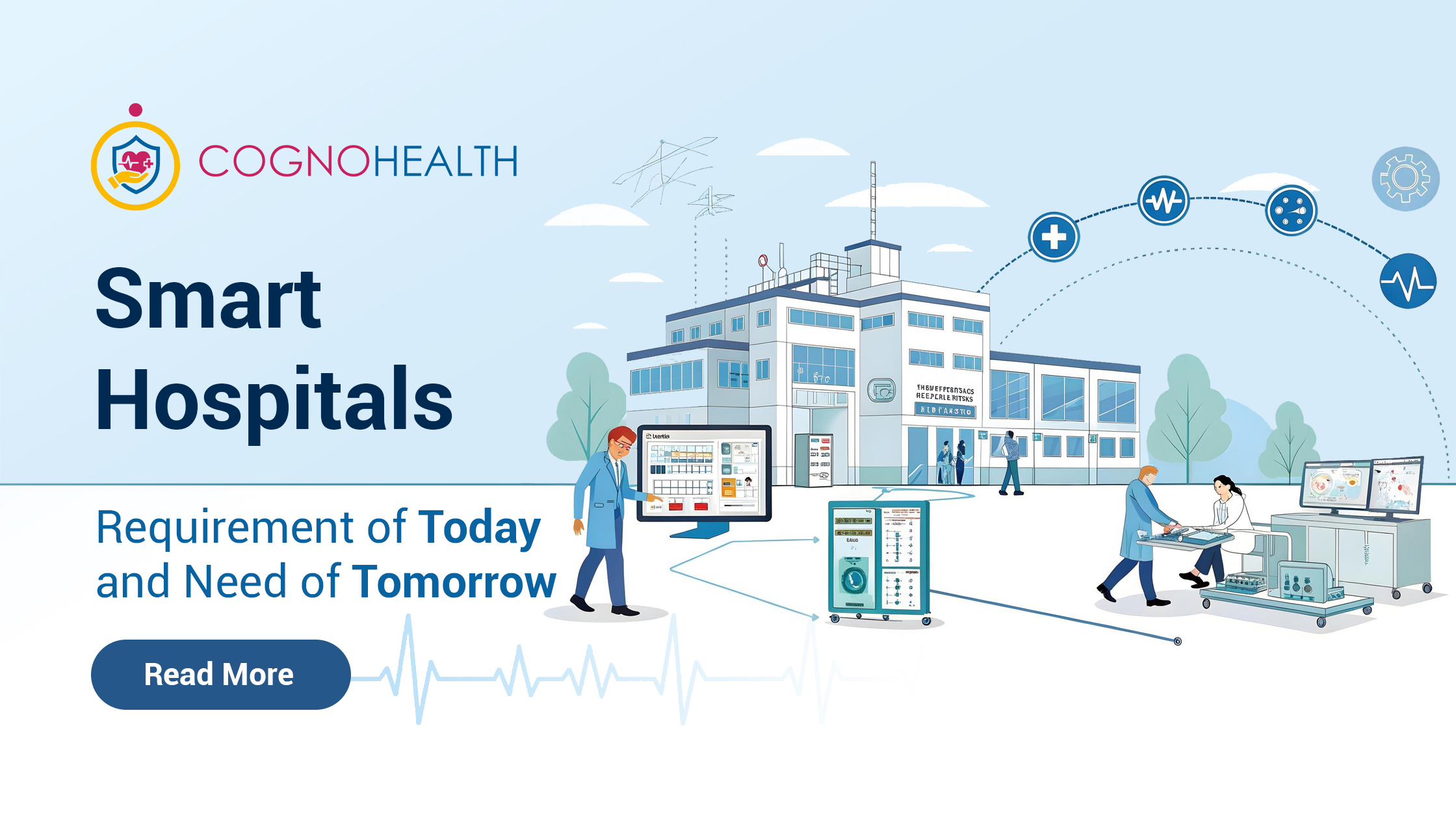
Smart Hospitals: Requirement of Today and Need of Tomorrow
The Growing Crisis in Healthcare
Healthcare systems worldwide are facing a dual threat: hospital readmissions and staff burnout. While patient volumes continue to rise, hospitals are struggling to maintain quality care. A major reason? The lack of continuity in care once a patient is discharged.
Recent studies reveal that nearly 20% of patients get readmitted within 30 days of discharge often because subtle symptoms went unnoticed at home. Simultaneously, healthcare professionals are experiencing record-levels of clinical fatigue and emotional exhaustion due to manual monitoring and a reactive care model.
This is where the evolution of the smart hospital becomes not just relevant, but essential.
What Is a Smart Hospital and Why Now?
A smart hospital is not just a facility with advanced equipment. It is a digitally integrated environment that relies on technologies like Remote Patient Monitoring (RPM), AI, IoT-enabled medical devices, and real-time analytics to make informed, proactive decisions.
But why now?
The shift toward Remote Patient Monitoring (RPM) devices for hospitals is being driven by both demand and necessity. Patients want personalized, convenient care, while providers need tools that help them manage chronic conditions post-discharge, track patient vitals remotely, and predict potential health risks before they escalate.
By empowering hospitals to monitor discharged patients remotely, REMOTE PATIENT MONITORING (RPM) bridges the care gap and helps hospitals operate more efficiently reducing both readmission penalties and overburdened staff cycles.
What Is Remote Patient Monitoring (RPM) and How Remote Patient Monitoring Enables Smart Healthcare ?
Remote Patient Monitoring is the backbone of smart hospital infrastructure. It enables doctors and nurses to remotely track critical vitals like blood glucose, blood pressure, and oxygen saturation from a central dashboard.
Instead of waiting for patients to return with complications, providers can now respond in real time—drastically reducing the likelihood of emergency visits or rehospitalization.
For example, a remote blood glucose monitor with real-time server sync alerts providers if sugar levels go beyond normal. The provider can initiate a teleconsultation, adjust treatment, and prevent escalation—all without the patient stepping into the hospital.
Whether it's REMOTE PATIENT MONITORING (RPM) for cardiac monitoring, post-operative care, or chronic illness management, the benefits are consistent:
- Lower hospital readmissions
- Better patient engagement
- Data-driven care decisions
- Reduced burnout for hospital staff
- Improved health outcomes
Smart Hospitals Help Reduce Burnout
Nurses and physicians are among the most overworked professionals today. The average hospital staff member is often responsible for monitoring dozens of patients, manually entering data, and juggling emergencies, all while navigating paperwork-heavy systems.
REMOTE PATIENT MONITORING (RPM) doesn’t replace them, it supports them.
With Cognota Healthcare’s Remote Patient Monitoring (RPM) platform, clinicians get automated alerts, trend reports, and patient-specific risk assessments. This reduces the number of unnecessary follow-ups while allowing them to focus on patients who need immediate attention.
The result? A more sustainable workflow, fewer night shifts for monitoring, and greater job satisfaction.
Cognota Healthcare: Enabling Smart, Connected Healthcare
Cognota Healthcare is redefining hospital care with its advanced suite of Remote Patient Monitoring products, built specifically for post-discharge patient tracking.
Cognota Healthcare’s REMOTE PATIENT MONITORING (RPM) devices include:
- Remote Blood Glucose Monitors
- Blood Pressure Monitoring Devices
- Pulse Oximeters
- Weight Scales with server sync
All devices are HIPAA-compliant, support real-time cloud integration, and allow for customized alert thresholds. Hospitals can remotely monitor patients with 24x7 data access, reducing the need for follow-up visits and emergency readmissions.
By adopting Cognota REMOTE PATIENT MONITORING (RPM), hospitals move from reactive treatment to proactive care management—achieving lower readmission rates, better patient satisfaction, and greater clinical efficiency.
Interested in exploring Cognota REMOTE PATIENT MONITORING (RPM) for your hospital? Visit our product page CLICK HERE
Future-Proofing Hospitals: From Crisis Mode to Continuous Care
Smart hospitals aren’t just about gadgets—they’re about systems that work better together. From teleconsultations to automated patient alerts, from real-time dashboards to secure cloud storage, everything must function seamlessly to support care continuity.
And with increasing demand for hospital-grade REMOTE PATIENT MONITORING (RPM) solutions, now is the time to invest in infrastructure that puts both patients and providers first.
If hospitals are to future-proof themselves against growing patient loads, chronic illnesses, and staffing crises, Remote Patient Monitoring will be the foundation they must build upon.
FAQs: Informational Intent Search Queries
-
What is the role of REMOTE PATIENT MONITORING (RPM) in smart hospitals?
Remote Patient Monitoring enables smart hospitals to continuously track patient vitals after discharge, reducing readmissions and improving clinical decision-making.
-
Can REMOTE PATIENT MONITORING (RPM) prevent hospital readmissions?
Yes. REMOTE PATIENT MONITORING (RPM) devices detect health issues early, allowing hospitals to intervene before a situation worsens—dramatically reducing the chances of rehospitalization.
-
Is REMOTE PATIENT MONITORING (RPM) only for chronic illness management?
No. REMOTE PATIENT MONITORING (RPM) is ideal for chronic care but also helps in post-surgery recovery, COVID-19 monitoring, elderly care, and more.
-
What’s the best remote monitoring device for hospitals?
It depends on the use case, but popular tools include blood glucose monitors, digital BP monitors, and smart weight scales that sync with hospital servers.
-
How much does REMOTE PATIENT MONITORING (RPM) system cost?
Pricing varies by product and hospital size. Cognota offers scalable solutions tailored to your patient volume and care goals. Enquire Now
-
How does remote monitoring reduce staff burnout?
By automating routine check-ins and sending only critical alerts, REMOTE PATIENT MONITORING (RPM) allows staff to focus on priority cases, reducing stress and workload.
Final Thoughts
Smart hospitals are the next step in healthcare evolution and Cognota Healthcare is helping make that future a reality today. By integrating Remote Patient Monitoring tools, hospitals can finally provide the continuous, data-driven care that patients deserve while giving healthcare workers the support they need to thrive.


